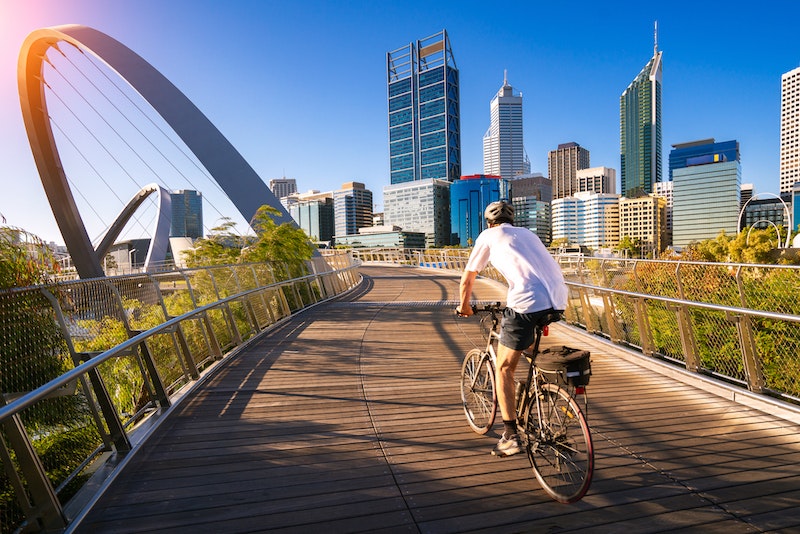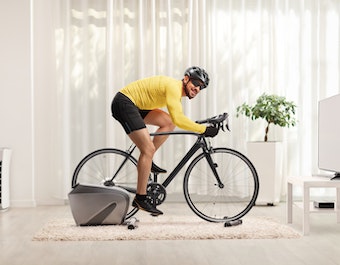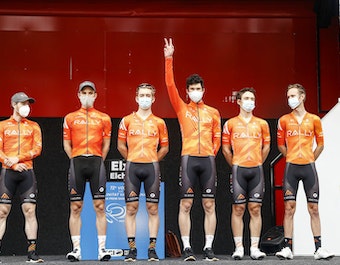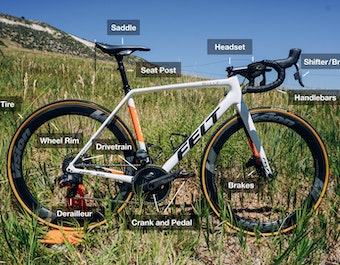Whether you’re a longtime cyclist or a total newbie, riding in the city can be intimidating. But with the right gear, a few basic rules of the road, and a good attitude, cycling can be an exciting way to explore. The members of the Rally Cycling team have lots of experience pedaling through crowded streets. Here, city cycling experts share their best tips for riding safely and having fun while doing it.
Borrow a bike
Bike shares are popping up all around the world, so if you’re visiting a major city, odds are good you’ll be able to find one. Google “bikeshare + YOUR CITY,” or check this extensive list for options. Many programs rent bikes for around $10 an hour; just make sure to bring a credit or debit card, as many kiosks don’t accept cash. Checking in and out is easy — just swipe your card to unlock a bike, and when you’re done, return it to the kiosk nearest you. If the city you’re visiting doesn’t have a share program or you’re looking for a bike more suited to big miles, renting a set of wheels through a bike shop is easy, too. Expect to pay $30 to $100 per day, depending on the model you’re looking for.
BYO helmet
Rally cyclists never ride without a helmet, even casually. It’s a teamwide policy that’s rigidly enforced. That’s because research has shown that wearing a bike helmet can save your life. Unfortunately, if you’re borrowing a bike from a share program, you may not be able to rent a helmet with it (some shares offer the option, but most do not). What to do? Travel with your own, or rent a helmet through a local bike rental shop for a few bucks an hour. Trust us, it’s worth it. Don’t leave your safety to chance.
Know the basics
As a cyclist, you should obey traffic laws, not pedestrian ones. That means riding on roads or in bike lanes, not on the sidewalk, and following the flow of traffic rather than riding against it. Also, on a bike, you don’t have turn signals or brake lights, so you need to signal with your hands to alert other riders, pedestrians, and motorists to your next move. The Rally Cycling pros know these signals well — they rely on them during group rides, and use them all the time. For newer cyclists, though, learning the signals may take some practice. The three you absolutely should know before you ride are for right and left turns and stopping. For a right turn, extend your right arm and point; for a left turn, extend your left and point. When you’re stopping or slowing down, put your left arm out and down at a right angle with your palm open, like you’re making a stop sign with your hand. Visit Bike League USA for a helpful video that breaks down each move.
Plan a route...
“You can usually plan routes that are on protected and separated bike paths to avoid busier roads,” says Olympic hopeful Emma White, who regularly rides in cities around the United States as she trains and races. Google Maps can help you find bike-friendly routes, and dedicated sites such as BikeMap.net and USBRS can, too.
Note that conditions will differ depending on the time of year — and day — you’re planning to ride. “In winter, roads that are shaded tend to be icier than sunnier streets,” Rally cyclist Ryan Anderson says. Also, he adds, during the morning commute, some “roads will be busier with cars getting to work. But in the afternoon, they’re nearly empty." Plan your trip wisely. If you need to use your phone to navigate, purchase an inexpensive bike phone mount that clips onto handlebars so you can see your screen easily. If you lose your way and need to pull over, signal that you’re stopping and pull off to the side of the road, making sure that you’re out of the way of cars.
...Or go with a group
Riding with others can take some of the think-work out of your travel. Going with a group can be safer than going solo, since most organized rides take place on bike-friendly routes, and group leaders can explain the rules of the road. To find local rides, pop into a neighborhood bike shop and ask, or do some Internet research. Look for routes that sound fun and appropriate to your fitness level. If you’ve never ridden more than 15 minutes at a time and you’re visiting New York City, for instance, Bike New York offers free learn-to-ride classes as well as group rides for all skill levels. Traveling somewhere else? Check out USA Cycling’s database to find a club near you. Don’t be afraid to contact meet-up groups or shop owners to research rides before you go — cyclists are a friendly bunch!
Be seen
This is a given. On busy streets, you want to make sure you stick out. “Lights are great, and reflective wear can help as well,” says Rally racer Krista Doebel-Hickok. The brighter the better when it comes to choosing clothing. “I love riding in my orange Rally Cycling jersey and shorts,” says Rally veteran Sarah Bergen. You may not have a professional cycling kit, but you can buy a fun, bright jersey from a local bike shop or club. New Rally Cycling team member Stephen Bassett rides with flashing lights on both the front and rear of his bike, even on sunny days. If all else fails? Use tape. Anderson adds pieces of reflective tape — available in most fabric and hardware stores and online — to his clothing and backpack at all times to make himself even more visible to motorists.
Stay alert
While cycling can be a great way to take in a city’s sights, be cautious. Traffic can be deadly when you’re not paying attention. “Be alert and observant at all times,” says Laura Shepard, Communications Coordinator at Bike New York. “Drivers may attempt U-turns on busy streets or other reckless maneuvers, and you may have to stop or evade them. People exiting taxis and other passenger vehicles often fling doors open without looking for cyclists, too, so maintain a safe distance of at least two bike lengths, even when vehicles are idling.” The same holds for watching out for distracted pedestrians. Keep your eyes peeled for children and people on cellphones darting in front of you.
Also? Limit distractions. A 2016 observational study out of Boston found that a third of cyclists rode with distractions such as headphones and cellphones, and another, small Dutch study found that riders who used their phones while cycling were more likely to veer or swerve, and detect fewer signs. Bassett never wears headphones in the city while riding “because I want to hear the traffic,” he says. Leave yours at home, too, and try to put your phone away if you can. Finally, obviously, don’t text and drive. Not safe.
Have a blast.
Don’t forget: Cycling in the city should be fun! Take it slow and savor the sights. For many of the Rally Cycling riders, the best part about tooling around a new town is cruising from attraction to attraction, stopping for snacks or souvenirs at cafes and shops along the way. “My favorite thing about hopping on a bike path in the city is knowing that there’s going to be a great cafe with a coffee and a pastry somewhere along the route,” says White. Breathe it all in and enjoy.
MOLLY HURFORD
Rally Health






